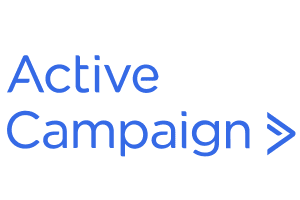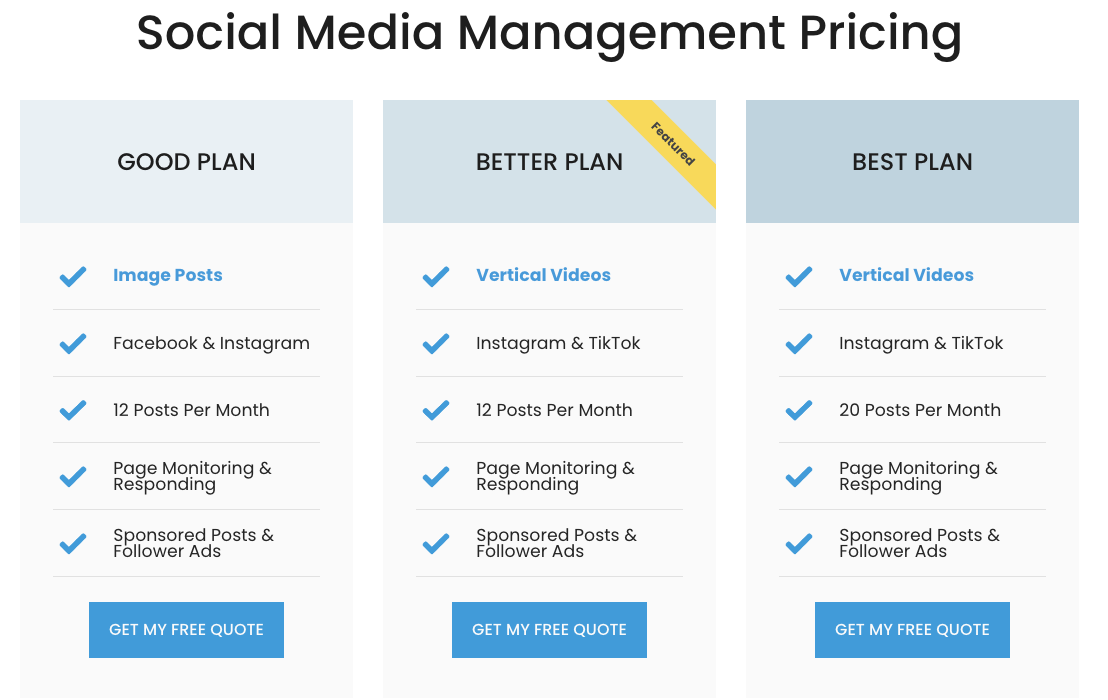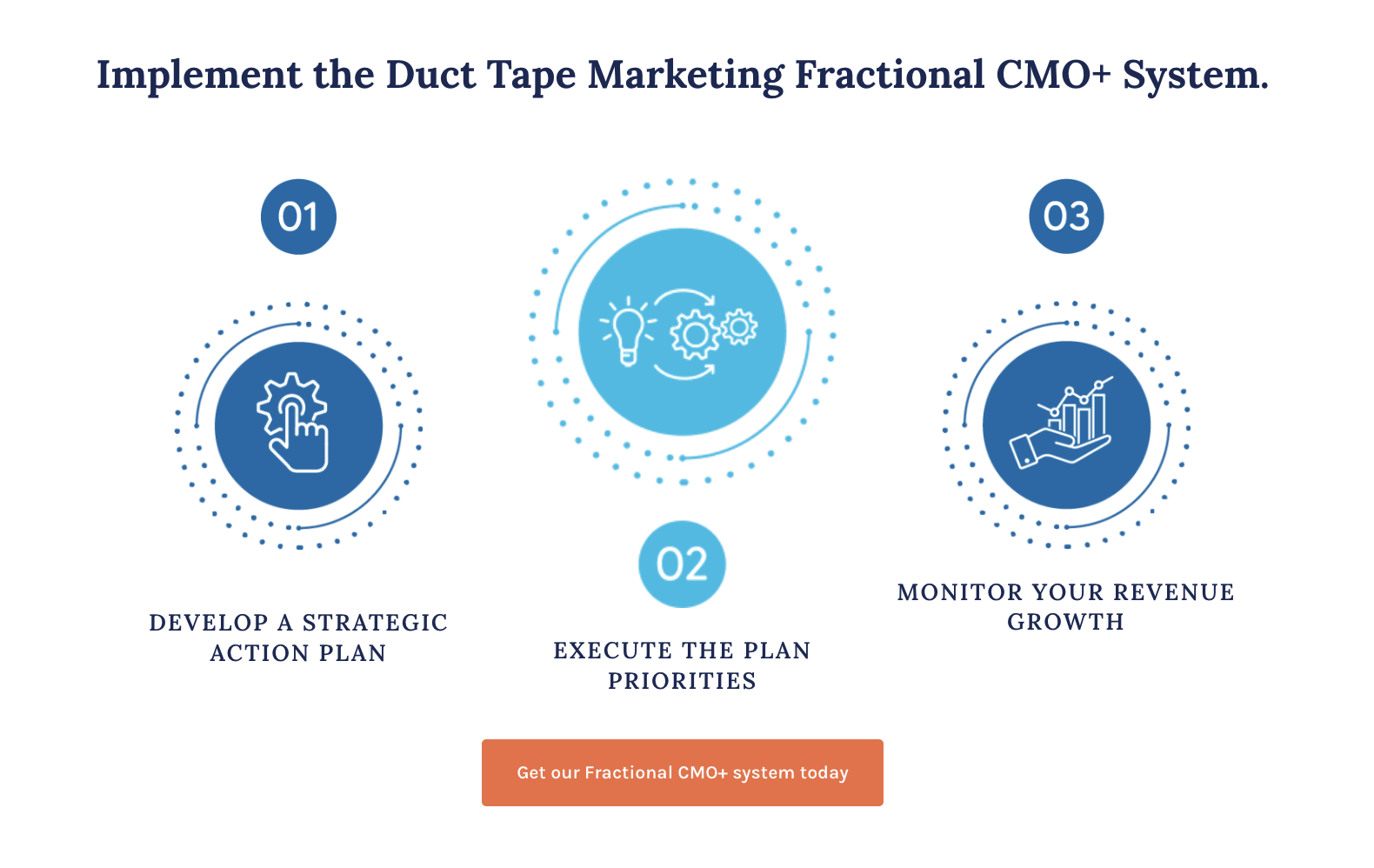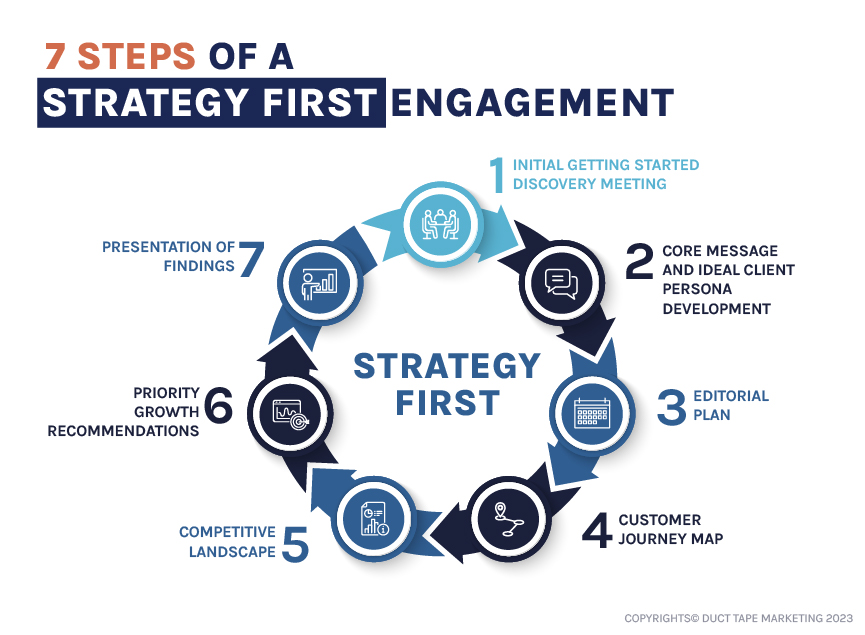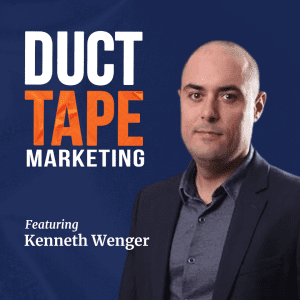Unveiling Business Clarity: Strategies to Work Less and Achieve more written by John Jantsch read more at Duct Tape Marketing
The Duct Tape Marketing Podcast with John Jantsch

In this episode of the Duct Tape Marketing Podcast, I interviewed Jim Vaselopulos, a seasoned business advisor and the founder of Rafti Advisors, LLC. With a wealth of experience in guiding companies through various stages of growth, Jim shares profound insights from his latest book, “Clarity: Business Wisdom to Work Less and Achieve More.”
Embark on a journey of business transformation as Jim unveils strategies for achieving clarity in the ever-evolving business landscape. Learn how his approach helps early-stage companies kickstart their growth, assists growth-stage companies in overcoming plateaus, and guides mature organizations through strategic shifts and complex challenges.
Key Takeaways
Embark on a journey of business transformation with Jim Vaselopulos as he unveils strategies for achieving clarity in the ever-evolving business landscape. Discover the power of clarity and how it enables leaders to focus on essential aspects, achieve more with less effort, and overcome common challenges faced by businesses of all sizes.
Gain insights into the significance of recognizing mentors and benefactors, expressing gratitude, and fostering a collaborative work environment. Explore the parallels between business symptoms and medical symptoms, emphasizing the importance of identifying root causes for lasting solutions. Learn Jim’s strategies for making time an ally, including the power of focus, intentional decision-making, and mastering the art of timing, sequencing, and patience, and dive into the concept of conscious competence, understanding why you do things to increase efficiency and effectiveness. Jim’s insights offer a fresh perspective on achieving clarity in a busy world, making this episode essential for those seeking to enhance their business acumen and effectiveness.
Questions I ask Jim Vaselopulos:
[01:12] Explore the significance behind Rafti in Rafti Advisors
[01:46] Tell us about the business background that led you to where you are today
[04:45] Have you come to understand that the keyword: clarity is the most significant thing missing in business today?
[06:00] Why is it common that it takes a third party to give clarity?
[10:56] Explain the parallels between business and medical symptoms as you highlighted in your book
[12:51] Talk about making time your friend and how this is a challenge a lot of small businesses face
[15:17] How does one get to the point where they can comfortably work less and achieve more?
[17:28] Where can people connect with you and obtain a copy of your book?
More About Jim Vaselopulos:
- Connect with Jim on LinkedIn
- Visit his website
- Get a copy of Clarity: Business Wisdom to Work Less and Achieve More
Get Your Free AI Prompts To Build A Marketing Strategy:
Like this show? Click on over and give us a review on iTunes, please!
Connect with John Jantsch on LinkedIn
This episode of The Duct Tape Marketing Podcast is brought to you by ActiveCampaign
Try ActiveCampaign free for 14 days with our special offer. Sign up for a 15% discount on annual plans until Mar 31,2024. Exclusive to new customers—upgrade and grow your business with ActiveCampaign today!
(00:08): Hello and welcome to another episode of the Duct Tape Marketing Podcast. This is John Chance. My guest today is Jim Vaselopulos. He is a C level business advisor with a proven record as a leader, strategist, rainmaker, and new business development expert. He’s the founder of Rafti Advisors, LLC, where he helps early stage companies get off on the right foot growth stage companies push through plateaus and mature organizations with strategic shifts and complex challenges. He’s also the author of Clarity, business Wisdom to Work Less and Achieve More. So Jim, welcome to the show. Yeah, thank you for having me, John. Appreciate it. So I do with that very Greek name. You did great. You did great. A lot of people just don’t even give an attempt, so I really appreciate it. Most people go by Jim V, you look at my name, it’s spelled very, A lot of conson is crushed together, so I know a lot of people struggle with it, so I make an attempt to get everybody’s names.
(01:09): So I’m always curious about names being of names, business names. So Rafti advisors, what’s the rafti? Well, seeing as I’m Greek rafti is, or Rafti actually in Greek is a small town in the mountains of Peloponnesian, Greece where my dad was from and where I hearken from my relatives. And that pays homage to my heritage and from which I gained a lot of the, I think, wisdom that is ever present in the book I just wrote. Awesome. Well, I’m glad I asked that. Alright, so give us a little lot of times when people write a book, they’ve had a long journey that brought them to that point. Give us a little bit of your business background that led you to where you are, but maybe also give a sense of what kind of experience you were able to gain that, let’s face it, allowed you to write a book to tell people how to do stuff.
(02:00): Yeah, I mean, I’m one of those guys that probably needed to learn lessons the hard way and I think sometimes that’s the best way to learn. But I’m writing a book, so not everyone has to learn the hard way, but I’ve been very fortunate to have a lot of great mentors and people along the way guiding me, nudging me, giving me advice. I was always just very mindful of those moments that you could almost recognize in your life that were kind of pivotal. I just wanted to capture all that. I had a pretty successful corporate career, started as an entrepreneur pretty early in my life, in my early twenties, and then I’ll tell you, it’s been wonderful, but it hasn’t been something I did alone. It was always with the help of other people and I wanted to kind of credit many of those folks that were known benefactors of mine and some of them that I call in the book momentary benefactors, people who played an outsized role, they didn’t even realize it, and I think that’s important in life.
(03:00): That’s interesting. A lot of entrepreneurs, I’ve read thousands of books, certainly when I was getting started, I leaned very heavily on people like Peter Drucker and Seth Godin, who’s become a good friend, and I always tell people that they were mentors to me. They didn’t know it at the time. Certainly Peter Drucker was not even alive, but I think probably most entrepreneurs have that collection of people that we sometimes just forget really played a role. Yeah, I mean I think it’s important to be intentional and one of the great joys actually, and I just sent a batch out of books today, mailing them to some of these folks, just I wanted ’em to have a copy of say, listen with a nice little note inside saying, you really helped me and you may not realize it, but you had an outsized impact on my trajectory.
(03:47): And I think that level of gratitude and is important to having a good life where you feel fulfilled and it also moves the needle forward and makes everyone else in your sphere feel maybe an inch taller as well so that they feel like, Hey, I didn’t realize I had done something good. That’s always a nice thing to do. I’ve written a number of books and I occasionally hear from people that have little stories, big stories about the impact. And I will say that you’re right. Sometimes you write these books and you think, is anybody even reading these things? And then you hear a story from somebody and it made a difference. That’s why I do this. Yeah, exactly. Break down both parts or a number of parts of your introduction, but going to the book, it’s interesting clarity a, I think if you went to business owners, I know that I do it all the time.
(04:34): I don’t think a single one of, well, I shouldn’t say most, would not say my greatest challenge is I don’t have clarity. They know something’s wrong, they can’t figure it out. They’re doing what they’ve thought is the right thing to do. That word clarity, have you come to discover that when you can get people to understand that they realize that is the most significant thing missing? It’s one of those things that I think as you said, people don’t go looking for it, but they typically are looking for something they don’t know what it is and they feel confused or burdened or just overweight with just all kinds of stimuli that are coming at them. And really it was my clients that told me that’s what they valued in the beginning. I thought they would’ve said like, oh Jim, you’re wise and we value your wisdom.
(05:24): But they really didn’t value the wisdom. They valued the results of the wisdom, which was clarity. They said, I feel like less encumbered. I feel like I know what to do next. I feel like some of the worries I had are muted or at least put on the side because I know that which matters most right now is in my sights and I’m going to go after it. And so clarity was the word that came up time and time again for my clients and I thought, wow, that really is what people value. And if I’m going to write a book, let’s put that right front and center. This is what people value. So why do you suppose that it quite often, most often takes a third party from the outside to come in and give you clarity? I mean, why is business owner the person that’s in it day to day, not able to see that’s the missing piece?
(06:14): Well, I mean because human, I think it’s really hard to kind of sit through your own head trash sometimes. And we have so many filters that we put between us and reality. I mean, the first part of the book talks about from a business sense of what goes on with business problems you’re trying to deal with, but really as you get deeper into it, it gets very much more into the kinds of things that distract us, how easily distracted we are with assumptions and is let astray by our emotions and to try and understand how to peel back those layers of the onion. It’s always easier to see a fault in someone else’s golf swing or in their tennis stroke, but it’s hard to see it for yourself. And so these are the kinds of things that getting objective partners, and it doesn’t always need to be someone who has more experience than you.
(07:06): I will tell you I work with a lot of entrepreneurs and business leaders who are, I believe far more accomplished than I ever was, but they’re human and so it’s easier for me to see something going on than for them to see it themselves. And so I think there’s a partnership there between a player and coach that can be productive when people lean into that relationship. I’ve had examples over the years where I’ve had a 10 or 12-year-old look at a website that we had designed for somebody and we thought was perfect, and they’re like, well, how do I make it do this? And you’re like, all these experts looked at it and they didn’t have that question. I think you’re right. Sometimes it just takes somebody who’s not involved in a way that could show you something. You work with businesses in numerous stages and I’m curious, do you find that they come to you with very similar characteristics?
(07:56): So the startup phase has similar characteristics, somebody who’s plateaued as you talked about, they’ve got the same challenges, almost all of ’em, somebody who’s now a mature business. Talk to me a little bit about what you see as the characteristics at each stage, because I’m guessing also there’s a level of lack of clarity that maybe changes at each stage. Yeah, I think one of the dirty little secrets having been a consultant for many years is that most businesses actually face very similar problems across the board, even spanning industries and sizes, et cetera. I mean, they’re very similar. No one wants to hear that, but that’s the truth. If I were to say though, some things that tend to be more, I’d say popular with smaller companies, I think a lot of times smaller companies get sequencing wrong. They know all the things they need to do, they tend to do ’em in the wrong order.
(08:47): They might obsess about operations and efficiency when they really should be focused on sales. And it’s not that both aren’t important, it’s just one might not be as important yet. And so I think that plagues smaller businesses in bigger businesses. I think you get in a lot of time management issues around delegation and accountability and trying to come up with systems that allow you to manage the broad scope of things because it’s too big for any one individual to try and get their arms around. And it maybe was easier 30 years ago when we had a lot of layers of middle management, but now that we’ve got pretty flat organizations, those problems become a lot more severe, more quickly. And so just getting the structure right on how you’re going after things and sometimes that just is getting a focus on what to do much about that from a management standpoint, it’s about saying no, management isn’t about approving things.
(09:45): Management is about saying like, Hey, this is what we should not do. Or if I approved, this is the implicit no, that goes with it. So let’s make it an explicit no. Yeah. And now a word from our sponsor. Work better now. Work better now provides outstanding talent from Latin America, hand matched to your business with over 40 roles across various industries, including marketing, there are a reliable partner for consistently finding the perfect fit for your business. Simply tell them what you need and they’ll handle the rest. We have two work better now, professionals on our team, a marketing assistant and a marketing coordinator, and we’ve been blown away by their abilities, responsiveness and professionalism. They’ve really become an essential part of our growing team. And to top it off, each dedicated and full-time work better now. Professional is 2350 per month and there are no contracts to schedule a 15 minute consultation with a work better now rep and see how they’ll support your business growth goals, visit work better now.com, mention the referral code DTM podcast and you’re going to get $150 off for your first three months.
(10:54): That’s work better now.com. And don’t forget that DTM podcast code. That’s interesting. I often tell people that all the time that half the job I do in developing strategy for people is selling ’em what not to do because I do think that’s a real challenge for most businesses. They’ve got everything. Everybody’s telling them they need this idea and this idea, and it’s really easy to get scattered. We fall into this trap where we say, oh, this is a good idea or this is bad idea. Most of the ideas tend to be pretty good. I mean, it’s just a matter of it’s not good now. And I think putting things in the context of time, we can’t do it all, can’t do ’em all. This is a good one. This is probably the best one to do now with the limited resources we’ve got, whether it’s time, money, people and then say, it’s not that the other ideas were bad, it’s just not yet.
(11:45): And so when it comes to strategy, strategy is about the sequencing of all the tactics, all the initiatives we want to put together, and I think we frequently kick people to the curb with their ideas and have them think their idea was bad. It might be a perfectly great idea, just not yet. You talk about in the book the idea of business symptoms being like or medical symptoms. Talk a little bit about how they are the same and maybe how they’re different. I often talk about a business comes to us and they have symptoms of not having a good strategy and they’re trying to cure the symptoms. Talk a little bit about your view of that. The reason I compare ’em to medical symptoms is because I want people to kind of internalize this in a way that makes sense to them. And so accountability is a huge problem most businesses face.
(12:33): And I kind of talk about how it’s kind of like having a fever, it’s really common, but just because you have accountability. I mean you might treat a fever with aspirin, but there’s a root cause behind that. There’s a reason, there’s a fever. The fever isn’t the problem, the problem is an infection or something else. And so we always have to dig deeper. And what I like to help people realize is that the symptoms are always outcomes. An outcome is if you have misalignment isn’t the problem. That’s an outcome of other issues. And so you want to be really careful with that being too busy or having conflict with the organization. Those are outcomes. Even culture, probably the most controversial symptom I have in my book is an outcome because I always talk about that like the immune system of your body. It’s not that you have a bad culture or a good culture.
(13:25): You’ve got a culture that is sometimes weak and sometimes strong, and the culture is really a manifestation of the actions you take on a daily basis. It’s an outcome. What are the things driving those actions? Well, that starts getting you closer to the ground truth and where you can really have an impact solving a problem. And I love that analogy because there are definitely a lot of businesses out there that are just trying to treat tactics or treat what they see as a problem with the tactic, the tactic of the week, and that they really just end up creating another problem. A lot of times you talk about making time your friend probably the greatest challenge. Certainly small businesses face how I’m sure listeners are waiting. How do you make time your friend part of it’s focus saying no to things, being very intentional about stuff.
(14:13): I think one of the other great ways to make time your friend is to really understand, take the time to think through what matters most. There’s so many things we do that we don’t need to do. Okay. And you just need to really think about that, make a little bit of time to evaluate what you’re doing on a daily basis, on a weekly basis, on a monthly basis and just say, did that move the needle? Why do I keep doing that? Who’s telling me I have to do that? Is there a reason? Is there a discussion? I can have to stop doing that. And in my career, I was able to do things that formally or took me 40 to 60 hours a week to get done and get that down to four to six hours a week. And everyone says, oh, that’s crazy. But I really just applied some of the same thinking that Tim Ferriss had in his book, the Four Hour Work Week.
(15:02): And I just said he always just threw the rule book out the window and just said, let me question everything. And that’s really a good practice. Then I think there are a couple other little things I’d add to that mentality. One of them is timing, sequencing, timing in patience. Really those are really powerful things that can make time your friend knowing the right order to do things and then timing the same amount of energy goes in hitting a foul ball versus a home run. It’s just a matter of hitting the ball at the right time. And so understanding your timing and knowing what the right time is and are you spending a little bit of extra time here and there to really figure that out. Because when you figure that out and you start Hint home runs all the time, well guess what? Work gets really easy and then you build up more time to learn and improve.
(15:50): So it’s like this self-fulfilling prophecy if you just spend a little bit of a time trying to figure out the right timing for things, the right triggers for things. And that is a process I really call conscious competence, which is do you know why you do things? Do you know why this particular phrase or this particular process works so well at this time? And if you know the right things to do at the right time, work gets easier, time becomes your friend, and you get to invest way more time getting even better at it. So the promise of the book really shows up in the subtitle, work less, achieve more. How do you get to that point where you actually can experience that as a reality? So literal this really busy world, we’ve all got a million things coming at us and whether it’s from the internet, tv, our clients, our email, I think it gets down to stripping away layers of the onion and getting to that which matters most is so you can have the most impact with the least amount of work.
(16:47): So I’m inherently a super lazy guy. I’ve had a lot of success in my life, but I’m always going to take the leap path of least resistance. So I’m like water, I’m going to find the easiest way to get through something. And so the outside layer is don’t focus your time on symptoms, recognize symptoms, peel them back, understand where the problems are. Once you understand the problems, peel those back and understand what’s clouding your perception of those problems. Because it’s the little things that cloud our ability to kind of see the world clearly and cleanly that slow us down. And so you peel that away. Then I kind of add in this kind of emotional aspect of trying to see other things that affect our demeanor, our temper, our perspective. Then you get into sequencing, timing and patients. I have a clear view, but now I can order things and organize them in the right way so that I can have the most impact and start hitting home runs instead of foul balls.
(17:42): And then as we get further into the book, it says, and here is the process you use and it’s really this conscious competence and working with other people to help them feel empowered to get to a point where you’re getting a lot done, you’re working a lot less and you’re achieving your goals much more because you’re not wasting a lot of time on stuff that doesn’t matter or move the needle and it can be done. And I just wanted to share that with folks because I mean, literally at the end of my professional career before I got into coaching and advising, I was doing the work that other people were taking 60 hours to do in less than a day. And it got to the point where it was annoying people. They’re like, well, how do you do that? And I said, well, this is the recipe.
(18:28): This is how you do it. Awesome. Well, Jim, I appreciate you taking a few moments to stop by the Duct Tape Marketing Podcast. Is there someplace you’d invite people to connect with you and obviously pick up a book or find, I got a terrible last name. It’s hard to find on LinkedIn and everywhere else, so I tried to make it easy for everyone. Business wisdom.com. If you go to business wisdom.com, you can connect with me on LinkedIn and you can see information about the book and about my business and everything you need is right there. Awesome. Well, I appreciate it again for you taking a few moments and hopefully we’ll run into you on these days out there on the road.
Sign up to receive email updates
Enter your name and email address below and I’ll send you periodic updates about the podcast.
